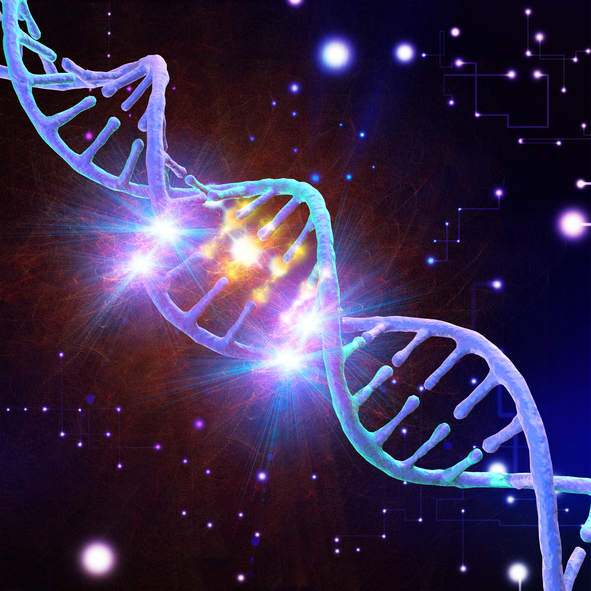
A novel system developed by researchers at the University of Pittsburgh and the University of Kent provides an unparalleled level of detail that helps explore how cells find and repair damaged DNA. The findings published in the journal of Nucleic Acids Research may lead to novel strategies and therapies for cancer.
In the new study, the researchers used the C-trap to investigate how different DNA repair proteins identify and bind to their respective forms of damage.
“I like to think about DNA damage as a pothole,” explained Ben Van Houten, PhD, professor in Pitt’s department of pharmacology & chemical biology. “In one particular DNA repair pathway, it takes about 30 proteins to go from finding the pothole to putting in the repair patch. While we can’t observe all of these proteins at once, we can observe them two by two.”
Van Houten’s lab is interested in repair proteins that mend DNA lesions caused by environmental factors, such as ultraviolet (UV) radiation from the sun and environmental pollutants. The C-trap system draws on Nobel prize-winning technology called optical tweezers, which use a strong beam of light to grasp and move microscopic beads until they stick to either side of a molecule.
“You can move the two beads together and hope that the two DNA ends latch on to each bead like Velcro. When you move the beads further apart, you can actually feel the measure of force of DNA like a spring, or a rubber band,” said first author Matthew Schaich, PhD, a postdoctoral fellow in the Van Houten lab.
In collaboration with University of Kent researchers, the Van Houten group developed a new method called Single Molecule Analysis of DNA-binding proteins from Nuclear Extracts, or SMADNE.
Using SMADNE, the researchers extracted DNA repair proteins from the nucleus of the cell. They then introduced these proteins into the C-trap and analyzed how and when they bound to DNA containing various types of damage.
“You have an area of DNA damage, and you want to know how a cell can identify and fix it,” Schaich explained. “One of the most important things to understand is who gets there first. Once it arrives, does it stay around for the whole repair cascade? Does it hand off repair to a different protein? With the C-trap, you can watch the proteins coming and going and learn a lot about the orders of assembly and disassembly.”
Van Houten thinks about DNA repair proteins like people socializing at a bar.
“Two people walk into a bar. Who goes through the door first? How long do they sit together at the bar, and then who leaves the bar first? DNA repair proteins, like people, are dynamic,” said Van Houten.
The researchers found that when DDB1 and DDB2 were working together at the damage site, they usually arrived at the DNA together and departed together, as expected. But to their surprise, they also observed 11 different association and dissociation patterns with the two proteins arriving and leaving at different times.
In addition to DDB1 and DDB2, Van Houten’s team used the C-trap and SMADNE to investigate the activities of DNA repair proteins from several different repair pathways to better understand these repair systems.
Their findings can pave the way to a better understanding of how disruptions in these pathways can lead to diseases such as cancer, and may pave a way for new treatments.
“DNA repair is a double-edged sword,” Van Houten explained. “If you don’t have efficient repair, environmental stressors could cause enough damage that cancer develops. On the other hand, many cancer treatments kill tumors by targeting DNA repair mechanisms.”
Van Houten and his team have applied for a patent for their SMADNE system and will continue to analyze all 30 of the proteins in this UV damage repair pathway.
“The combination of the C-trap and SMADNE has opened up endless opportunities for the study of DNA repair. But what’s the most important question that we can answer using this new tool?” said Van Houten.











